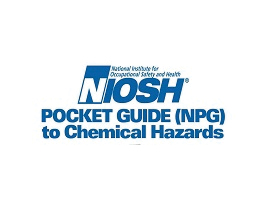Nitrous Oxide

Overview
CAS No.10024-97-2
Nitrous oxide (N20) is a colorless gas stored as a liquid. Breathing nitrous oxide can cause dizziness, unconsciousness, and even death. Long-term exposure can lead to infertility. Contact with liquid nitrous oxide can cause severe frostbite. Workers may be harmed from exposure to nitrous oxide. The level of exposure depends on the dose, duration, and type of work being done.
Nitrous oxide is used in many industries. It can come from anesthetic equipment, surgical patients, and storage cylinders. Some examples of workers at risk of nitrous oxide exposure include the following:
- Medical personnel who work in surgical rooms in hospitals, surgery centers, or medical offices
- Dental workers where nitrous oxide gas is used as an anesthetic
- Recovery room personnel who are exposed to outgassing patients who emit fumes after surgery
- Workers in laboratories and facilities where compressed gas cylinders are moved and stored
- Service workers who clean and maintain surgical rooms before or after surgery
NIOSH recommends that employers use the Hierarchy of Controls to prevent worker exposures. If you work in an industry that uses nitrous oxide, read chemical labels and the accompanying Safety Data Sheet for hazard information. Visit NIOSH’s page on Managing Chemical Safety in the Workplace to learn more about controlling chemical workplace exposures.
The following resources provide information about occupational exposure to nitrous oxide. Useful search terms for nitrous oxide include “dinitrogen monoxide,” “hyponitrous acid anhydride,” and “laughing gas.”
NIOSH Chemical Resources
Related NIOSH Resources
- NIOSHTIC-2 search results on nitrous oxide – NIOSHTIC-2 is a searchable database of worker safety and health publications, documents, grant reports, and journal articles supported in whole or in part by NIOSH.
- NIOSH: Managing Chemical Safety in the Workplace – The NIOSH Chemical directory provides a centralized resource for guided access to the Institute’s many significant research documents.
Selected Publications
- NIOSH Report – Waste Anesthetic Gases – Occupational Hazards in Hospitals – DHHS (NIOSH) Publication No. 2007-151 (2007) – Hospital workers are exposed to volatile anesthetic gases that leak from anesthetic equipment. This report increases awareness and recommends work practices to reduce exposures.
- NIOSH (FACE) Fire Investigation Report – DHHS (NIOSH) Publication No. F2003-03 (2003) – Volunteer fire fighter dies following nitrous oxide cylinder explosion while fighting commercial structure fire in Texas.
- NIOSH Hazard Control – Control of Nitrous Oxide During Cryosurgery – DHHS (NIOSH) Publication No. 99-105 (1999) – NIOSH studies have shown that N2O in the air in cryosurgical units can be effectively controlled by ventilation and equipment maintenance, and if this is not possible, through using a less hazardous cryogenic gas.
- NIOSH Hazard Control – Control of Nitrous Oxide in Dental Operatories – DHHS (NIOSH) Publication No. 96-107 (1998) – Dental workers are exposed to nitrous oxide (N2O) when patients receive it as an anesthetic. Exposures should be minimized to prevent short-term behavioral and long-term reproductive health effects that can be produced by N2O.
- NIOSH Report – Control of Nitrous Oxide in Dental Operatories – DHHS (NIOSH) Publication No. 94-129 (1994) – Researchers from the National Institute for Occupational Safety and Health (NIOSH), conducted four in-depth field evaluations, and one laboratory study to evaluate three commercial dental operatory waste anesthetic gas scavenging systems for their effectiveness in reducing nitrous oxide exposure.
- NIOSH Alert – Controlling Exposures to Nitrous Oxide During Anesthetic Administration – DHHS (NIOSH) Publication No. 94-100 (1994) – This alert presents control measures for preventing or greatly reducing exposure to N2O during the administration of anesthetic gas. These control measures should be part of a comprehensive written safety and health plan for workers.
- NIOSH Update – NIOSH Warns: Nitrous Oxide Continues to Threaten Health Care Workers – DHHS (NIOSH) (1994) – NIOSH warns that even with preventive measures such as scavenging systems in place workers may be at risk for serious health effects due to their exposure to nitrous oxide.
Related Resources
- EPA Chemistry Dashboard: Nitrous Oxide
- OSHA Occupational Safety and Health Guideline: Waste Anesthesia Gases
- OSHA Guidelines for Workplace Exposure: Anesthetic Gases
- OSHA Chemical Sampling Information: Nitrous Oxide
- OSHA Hazard Communication
- NLM Hazardous Substance Data Bank: Nitrous Oxide
- NLM Haz-Map: Nitrous Oxide
- New Jersey Hazardous Substance Fact Sheets: Nitrous Oxide



